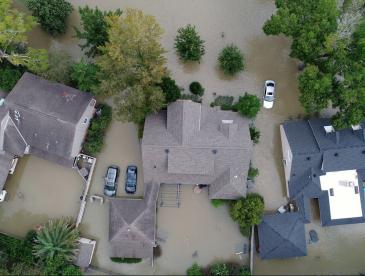
Helping a billion people breathe cleaner air
The problem: Air pollution is a global public health crisis and the fourth leading cause of death globally. Nine out of 10 people around the world breathe unhealthy air, and burning fossil fuels is both the largest source of air pollution and the biggest cause of climate change.
What we’re doing about it: We’re working to help 1 billion people breathe cleaner air in this decade. By pinpointing local pollution in countries around the world, we’re giving policymakers, community groups and the private sector the tools they need to reduce pollution and hold polluters accountable.
Our work reducing air and climate pollution
- Project
Our pioneering work to map and measure local air pollution
- Blog post
EDF’s Air Tracker expands to Rio de Janeiro, aiding efforts to cut air pollution
- Project
Unearthing Pennsylvania’s legacy of orphan and abandoned wells
- Article
Hurricanes’ hidden risk: toxic chemicals
- Article
Game-changing partnership takes on air pollution in Latin America, the Caribbean
- Explainer
How are air pollution and climate change connected?
Updates
Read the latest articles, blogs and press releases on clean air.
-
“Advanced recycling” is a toxic scam — now the EPA is turning a blind eye to some of the most toxic chemicals it produces
Blog post, -
Do you live near a facility with a free pass to pollute?
Article, -
Illinois Approves Electric Rate Encouraging Use of Clean Affordable Energy
Press release, -
Trump administration renews attacks on science
Article, -
Public Advocacy Groups Take Trump Administration to Court for Illegal Coal Plant Extension
Press release, -
Smarter jet fuel policies and carbon markets can power cleaner aviation
Blog post,
Clean air resources
Dig deeper into our work with these resources for researchers, policymakers, journalists and communities.
- Blog
Read the latest updates from our experts on EDF’s Global Clean Air blog
- Overview
Clean trucks and buses: Electrifying fleets to cut air and climate pollution
- Explainer
Health effects of air pollution
- Explainer
How methane harms our health and what we can do about it
- Toolkit
Air Quality Data Directory
- Interactive tool
Air tracker shows path pollution takes through neighborhoods
Our clean air experts
We bring wide-ranging perspectives and skills to our clean air work. Meet some of the people who make it happen.
Partner perspective
Today, more than ever, we must protect people, especially the most vulnerable, from environmental pollution. EDF is a critical partner in this effort.
Georges C. Benjamin, M.D.
American Public Health Association
Media contact
Cecile Brown
(202) 271-6534 (office)




















